Meet the golf group CEO: Colin Mayes
The CEO of BGL, which operates 10 golf courses in England, and president of the UK Golf Course Owners Association talks exclusively to us about how venues can attract new customers, dealing with difficult committee members and tackling the VAT disparity in the golf industry
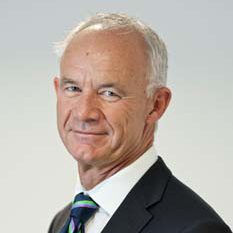
Hello! Can you tell our readers how long you have been CEO of BGL and president of the UKGCOA, and how you got to these prestigious positions?
I’ve been CEO of BGL for 11 years now. I took up the position in June 2006 following three years as chairman of a restaurant company and holding a number of non-executive directorships. Prior to that I had been with Greene King Plc where I was managing director of its managed pub company. Most of my early career had been spent with Forte Plc where my last position with was as vice president of Development for Europe, based in Rome. Basically, I was born into the hospitality business as my parents owned and ran a pub business and I just love businesses that involve people, leisure, food and beverage and property. With that mixture there is never a dull day.
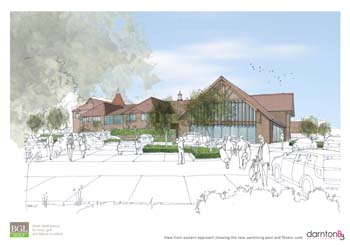
I was chairman of the UKGCOA from 2010 to the beginning of this year when Richard Haygarth, owner of Maple Leaf Golf, took over the role. I still remain a board member and president, and try and contribute to the wider golf industry whenever possible.
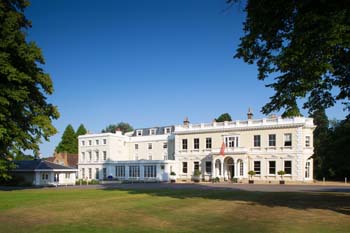
How have BGL clubs been performing in the last few years? If they’re doing better than the industry average, what is the secret of the success?
We have been doing well but can always do better, is the simple answer. This year we were voted one of the top 20 performing businesses in Surrey in the £10m to £300m turnover range, based on the measurement of compound annual growth over a three-year period (we are in very good company in Surrey with Sony, McLaren and Samsung to name but a few). Golf is a particularly tough business with levels of participation of new players dropping. But we continue to work very hard at attracting new players to the game and making sure we keep those already engaged with us playing and enjoying their golf and, importantly, having fun doing so. We continue working hard at motivating the management team and ensuring that they all perform at a consistently high level.

BGL clubs have been linked with forward-thinking initiatives such as footgolf and adventure golf that many clubs in the industry do not want to embrace. How are these performing and can you see any new initiatives on the horizon?
The footgolf at Hoebridge has been an outstanding success, and we have four other footgolf venues which are doing well too. It is not for all our golf courses but it does help attract new people and customers to our venues and by doing so opens up the opportunity of playing the more traditional game. All of our businesses have a par three course and we are careful to protect this important area of our offer. The secondary spend from footgolfers is higher than regular golfers which is good for the club as the food and beverage business is increasingly important.

Mr Mulligan’s Lost World Golf in Stevenage, Hertfordshire. Picture by Dan Law/danlawphotography.com
Though some traditionalists are not necessarily fans of footgolf, the fact is that it is helping golf in general because there is no doubt that in all our footgolf businesses, our overall golf traffic has improved since we introduced it. We are blessed with a range of great facilities and many of these literally offer golf for all age groups and ability levels. Because of that we are constantly happy to try new initiatives that we believe may help us improve participation through to the more traditional game. However, it is also important to listen to feedback from your regular customers and regularly review new initiatives to make sure that they are positively contributing to all areas of the business.
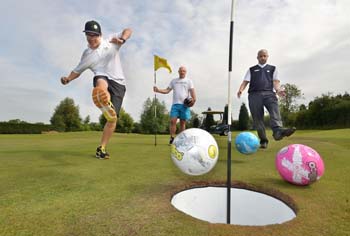
Our adventure golf course development is a great example of this. The courses provide a great introduction to the game for kids and families to our sites, which in turn aids our food and beverage business and helps push those customers to our driving ranges and our par three courses. Again, adventure golf won’t suit all clubs, but it has proven to be very successful at Hoebridge, Abbey Hill and Ramsdale, introducing many new youngsters to those centres which offers us a great opportunity to convert them to the wider game. We need to get the message over that golf is fun and youngsters need to associate golf with having fun and enjoying themselves, then we might have a chance of converting them to our great game.
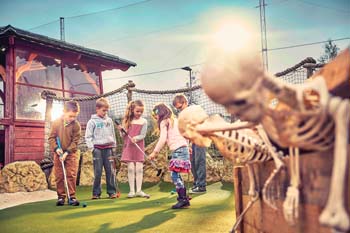
When we first introduced it to Hoebridge we did upset a number of the very traditional members who unfortunately chose to leave us as they did not agree with our view that the club needed to attract a wider age group and particularly youngsters. I think most of them thought that adventure golf was not serious golf and many will still take that view. From a business perspective despite losing close to 100 members the business is significantly stronger with all revenue streams growing including membership again with an improved average age of member.
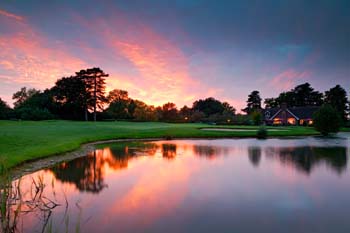
Going forward, I’ve always said that we want to expand the adventure golf business to a minimum of 20 units. In 2016 we opened our first indoor site at Stevenage Leisure Park with a small bar, food and beverage area that has proved to be very popular with both youngsters and adults alike. Building upon the success of this opening we are opening further new indoor sites in Cheltenham and Newcastle by the end of 2017 and hopefully a further three new sites in 2018. In 2017 we also opened a small outdoor site at Tonbridge Driving Range which has also been a great success. We will therefore be looking for a combination of both indoor and outdoor sites in the years to come.
We’re doing it because it’s great to bring families together in a golf environment, but we’re also doing it because commercially we think that it’s an experience of going somewhere with the family that can be repeated regularly. Having fun appeals to all ages and connecting socially is what you get when you have a golf club and a ball in your hand, even though it might just be a putter.

The great thing is that any age group can do it and you do not need a huge amount of skill to take part. Socialising whilst competing at a low skill level requirement is something you will see and hear a great deal more about in the future. I believe society needs to get away from mobile devices and online socialising and people need to reconnect in the real world. Those businesses that help that process will win in all sorts of ways – we probably just do not really understand how and to what level just yet. Having been connected with the hospitality business for most of my life there is nothing better than talking and having fun with your friends and family, golf can deliver that with exercise as well; those involved in golf just need to be a tad more inventive on how the industry communicates this. A putter and a golf ball, a welcoming and interesting environment and a level of competition to suit all is a pretty good place to start.
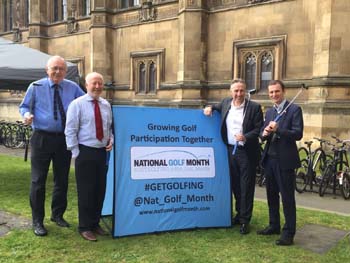
Because UK golf is so weather dependent, I also want to spread our risk and build family engagement with the game of golf even if it is only with a putter; getting that hole-in-one is just as exciting indoors as it is outside and hopefully the sense of fun and enjoyment will stay with our customers and encourage repeat usage. It is also not all about the golf, our customers’ experiences are so important, great food and beverage served by knowledgeable and polite staff in clean and interesting surroundings is also important. Delivering all that at consistently high standards takes skill, knowledge and experience – thankfully in BGL we have grown a great team that can deliver this most of the time. Hopefully they also understand that to do that, we must constantly stay at the top of our game, learn from our mistakes and keep developing every aspect of our operation.
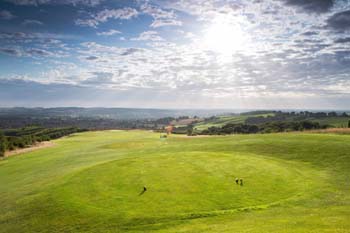
In terms of any new initiatives we are concentrating on our adventure golf but very much hope that this leads to other opportunities for families to enjoy the game of golf together and thus the industry will evolve to suit consumer wishes.
How reliant are you on non-golfing revenue such as the bar and restaurant towards your group’s turnover?
With the British weather being so unpredictable, I’ve always been looking at investments that help us balance the income streams so that we’re not so reliant on just when the sun shines. It’s important that the food and beverage business at each of our golf courses can stand on its own two feet so it can compete in the local market. Our function rooms are going to be busy if the sun is shining or not, and hopefully our other food and beverage operations are going to be attractive enough that people will come and visit them whether they’re coming to play golf or not.
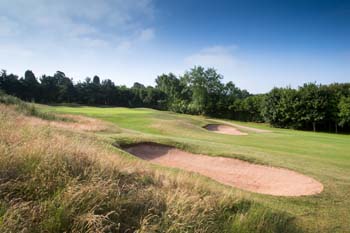
Thankfully we have developed a great food and beverage business at most of our sites through real focus and hard work. Food and beverage is a tough business because everybody is so much more knowledgeable on food and drink, helped by the great number of cookery programmes now on TV. So, if I was to give any advice on this area it would be to think about it very carefully before embarking on providing it as a service and don’t do it, unless you really know what you are doing. Certainly, over the last ten years we have now developed a much more robust business model with both retail and food and beverage being major contributors to our operational performance now.

What do you think are the biggest challenges and threats to the industry at the moment?
Participation levels have obviously declined over the past decade, but the most recent SMS and KPMG figures were more positive, showing slight growth, but we have to remember that this only reflects membership of golf clubs. We have no hard figures on what is happening to casual golf. Given the numbers I see at our own pay and play businesses I believe we are still losing significant numbers of casual golfers and this will in time feed through to membership clubs. I think participation is something the industry needs to look at in a lot more detail to make sure that this is addressed. We need to think of ways to resurrect the game to ensure that people have a good time and are fulfilled at our golf courses so that they want to keep coming back.
To be truthful, at this moment in time I can’t see participation numbers increasing because not enough people are engaged enough to stem the tide and make this happen. Nearly all the leading authorities are focussed solely on growing membership because at least they can measure that. We need the game to promote more fun-style, simple golf activities at our major events. It’s great The R&A have introduced the par three format in the days leading up to the Open but would it be a positive step if this was extended so that each of the top players participated and teamed up with a couple of youngsters and they televise this competition the day before the Open starts just like they do at Augusta? The same could be done at Wentworth for the PGA event. The power of our great golfers being on TV having fun with juniors should not be underestimated. When we do something like that, I will be convinced that the governing bodies responsible for the growth of the game are getting serious about increasing participation in our sport.
I went to The Masters seven years ago, and the most exciting day was the day before when they held the par three tournament with juniors because all the professionals were getting involved in it and they were having great fun. The consumer could see that they were happy and having fun and it’s part and parcel of the tradition of the event.

Our leading professionals can be there showing that golf can be a family game. For the greater good of golf, I think there’s a message there: get the families involved. It’s great to see an Open champion with their kids around them; if their kids can be seen with a golf club in their hands, so much the better. Starting your golfing career on a par three course has a great deal going for it and therefore needs promoting.

The threats to golf recently have come in the guise of other outdoor pursuits. What we have seen since the London Olympics is an explosion of cycling, running and triathlon activity with events to suit every level springing up all the time. These activities are now sociable and inclusive and can fit around a busy lifestyle. I believe the real issue is that other leisure and fitness activities have a greater sense of camaraderie. If you go along to any local running club you are welcomed and encouraged no matter your ability or the kit you are wearing. In my experience a top level triathlete at a tri club welcomes the chance to help others progress and will be welcoming to newcomers to the point of imparting words of wisdom about their sport and giving tips and advice. Does this happen in golf to the same extent? I would argue it doesn’t and it is the duty of all golfers to change this culture. Our job in the industry is to try and bring back to golf those people that have committed to lycra by ensuring they feel they have choice in whether to get the bike from the garage or the clubs from the porch. Golf should be promoting itself as a great leisure activity with fantastic health and wellbeing benefits. Golf needs to be marketed as such so that those with leisure time will sometimes choose the heart rate monitor and sometimes choose the golf course for a balanced healthy lifestyle.

What are the biggest challenges managing a golf group with so many different clubs?
The main challenge is to remember that they all have their individual markets and what works at one doesn’t always work at another. As a group we try and work at creating synergy between the clubs wherever possible to assist with driving down costs and to maximise and spread good practice among management. Overall, I think we are successful at that but we are also constantly looking to achieve more.

Are BGL clubs running programmes to attract women or beginners such as women-only events or free coaching?
Absolutely, there are families out there that want to engage with golf, but you can’t sit back and wait for them to come in, you’ve got to actively do things to attract them. For example, we’ve had great success at the likes of Burhill by engaging directly with women and this has seen us significantly increase our female membership. We also have one of the strongest junior sections in the country. At Burhill we have a girls’ training session every Saturday that’s open to all. Girls can bring their friends and sign up easily. This has helped us, and we’re doing more of that at all the other clubs.

I think there is a recognition now that there are a lot of women out there who will come and play golf if they feel welcome and if the facilities are minded to accept them. I think we simply must make more of an effort to engage with women and girls as an industry.
In addition, all our venues run ‘BGL Golf Schools’ where beginners have the choice of group or individual tuition programmes with our PGA-trained teaching professionals. We run junior golf camps and group sessions for children from as young as four years old.

A trend in recent years has been flexible memberships, but BGL seems to have steered away from this. Why?
We have probably just been very cautious about its introduction rather than steering away from it. In many of our sites it’s working well and I believe that it certainly has a place in a club’s membership offer but perhaps not at all clubs. We’ve introduced flexible memberships with some great results at Wycombe Heights for example. It introduced a new ‘Flexible Membership’ at the start of 2016 and it’s proven a real hit with young professionals locally. The centre recently signed up its 150th flexible member, and many of these members are aged between 25 and 45.
In my opinion we must look at the modern-day family. Twenty years ago, gentlemen could get away for a Saturday afternoon or Saturday morning for five to six hours because invariably the wives didn’t work. In today’s modern family, both people are working, both are contributing to looking after the household so demands on family time have been squeezed. Offering a flexible membership package to encourage them makes sense. It can then also act as a feeder to seven-day club membership.
I think one of the big fundamental social changes is that families want to do things together. Do we make Sunday afternoon family golf only? What we absolutely must do is encourage the family unit to come and enjoy golf together and I think the more we can do that the better. So membership offers have to reflect this.
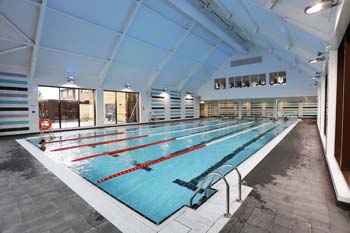
How can the problem of slow play be tackled?
By improving marshalling and educating golfers on what is expected through sensible signage on the course. The simple answer is it is down to club management to monitor it and work with their members and visitors to educate them in what is expected. Where we have had such problems, we have given it focus and it gets resolved. You just need to keep working at it.
Having said that, one of the attributes of golf is that it is an activity that should be savoured and enjoyed at perhaps a slower pace than the rest of one’s life. With the pace of 21st century life being so fast I am not sure there is anything wrong with enjoying quality space and time on a golf course. This of course should be within reason and communicated to all players about expected pace of play. The pleasure and health benefits of the game, and what should be remembered is a delightful walk in the countryside, should ensure a timely game of golf.
I’m a great believer that the nine-hole facility will have a new lease of life for the future and should therefore be used as a bit of a training ground in educating new players what is expected of them when playing. Golf is such a great game that you don’t want to tinker too much with it; we are dealing with a game that has been around a couple of hundred years and, fundamentally, it has withstood the test of time.
I don’t think golf is broken in any way, shape or form, but I do believe that we must take notice. Modern society hasn’t got as much time collectively to play golf in the way it was played.
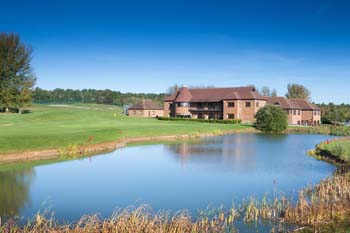
What does BGL do to combat rising suppliers’ costs?
We work hard at having solid partnerships with all our key suppliers and nurturing the relationships we have with them. Clearly, we want to negotiate the best commercial terms possible but we also expect them to make a fair profit for the effort that they are putting in to provide their products and services. We are fair in making sure that they get paid on time and when we agree a deal we do our utmost to deliver on our side of the bargain and expect them to do likewise. We try not to change suppliers too often, rather focussing on how we both can do better and get the best out of the relationship. I am proud to say that many of our suppliers that we used when I first came into the business over 10 years ago are still with us today and hopefully for many years to come.
One important point I always try and make to prospective new suppliers is that I want them not only to supply quality products to us at market-leading prices, but I expect them to try and constantly add value to our business by introducing new ideas, products or people to us that will make us a stronger organisation. If we grow stronger then so do they. I also want them to feedback to us where in their opinion we get it right and, even more importantly, where we get it wrong. To me they are yet another set of eyes and ears to our business and that feedback can only be helpful to improve our service and products to our customers. Happy customers keep coming back and we all grow together.
Having said all the above, when the time to change is right we do so, we have just ended a banking arrangement that was over 30 years old!

What are the best ways to market your venues?
All our venues have comprehensive marketing plans, specifically tailored to their needs and designed to engage with the local community. In particular, we are having a lot of success across the board on Facebook. Social media is now playing a major role in how we communicate with members and casual players and communication is what we must do better. We are spending more of our time and resources looking at this whole area and particularly digital marketing. I am sure this will only increase in the years to come. But I also like to point out to all our people that there is nothing better than talking face to face to existing members and customers and to potential new ones. Real one-to-one relationships are important and, as the digital age moves on, those organisations that keep a real focus on one-to-one relationships will be truly valued. As they say, people love to talk and spending real time with people will become increasingly important. How else can you really find out what they want from their memberships, society booking, corporate function, wedding or family occasion without having a decent one-to-one conversation?
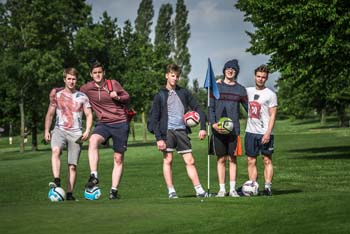
Most golf clubs have experienced the odd committee member who has become a problem. Do you have any advice on how to deal with this?
Being honest and ensuring club management are facing up to the issues being raised and dealing with them. Often club management just hope that problems will go away; in my experience this only lets the problem / issue get worse. We have to remember that club management are paid to manage and, invariably, weak management often allows club members to take advantage and push individual causes rather than be for the greater good of the club. If necessary – and it should most definitely be a last resort – management should not be afraid to tell the member that perhaps they should consider joining another club; particularly if you know that you are never going to be able to satisfy their demands. I remember very clearly that at one of our clubs we had a group of members that we could not keep happy as their expectation of what the club provided for the price point they wanted to pay was just not possible. We therefore had to be strong and encouraged them to leave as they were beginning to have a very negative influence on our other members. Once they left after a bit of pushing from ourselves, the whole atmosphere of the club changed for the positive and we quickly replaced them and have been growing the membership of that club year on year ever since. The club now has a great atmosphere and is thriving. My message is simple: make sure club management manage and do not let negative members bring other people down with them. Remember the club and the member both have a choice whether to renew a membership.

What is the latest in your battle to achieve VAT parity between private members’ golf clubs and the proprietary sector?
The UKGCOA, alongside advisor KPMG, has been in discussion with HM Treasury for many years in an attempt to provide the economic, legal and political justification for resolving the divisive issue of differing VAT treatment for golf participation between member-owned and proprietary golf facilities.
We were advised by one of the UK’s leading taxation QCs to exhaust a collaborative strategy with the Treasury before considering the speculative and hugely expensive legal route, so we took this advice and are now approaching the final stage of that collaboration. With support from golf’s governing bodies, especially England Golf, we have provided the Treasury with a significant amount of economic and legal data, at their request, for a decision to be considered on the most acceptable resolution for the Treasury and the golf industry.
Unfortunately, timing was not on our side as we provided the final package of data to the Treasury just as Theresa May announced the election, so other priorities took over. Following the election, new Treasury ministers were appointed, then we had the summer recess and now Brexit negotiations are moving other government decisions further down the agenda.
However, we are in regular communication with our Treasury contacts and recently received an email letting us know that the economic and legal data provided along with the three options to resolve VAT distortion in golf, that we have proposed, will be put to the financial secretary, Mel Stride MP, as soon as possible.
We are also ensuring that the Parliamentary Golf Group is kept informed so that the MPs involved can add their support for a resolution at the earliest possible time.
We are confident that the Treasury and many MPs are aware how important an issue VAT distortion in golf is to the industry and remain confident that it will be resolved; what we are not as confident about is the timing.















Let me tell You a sad story ! There are no comments yet, but You can be first one to comment this article.
Write a comment